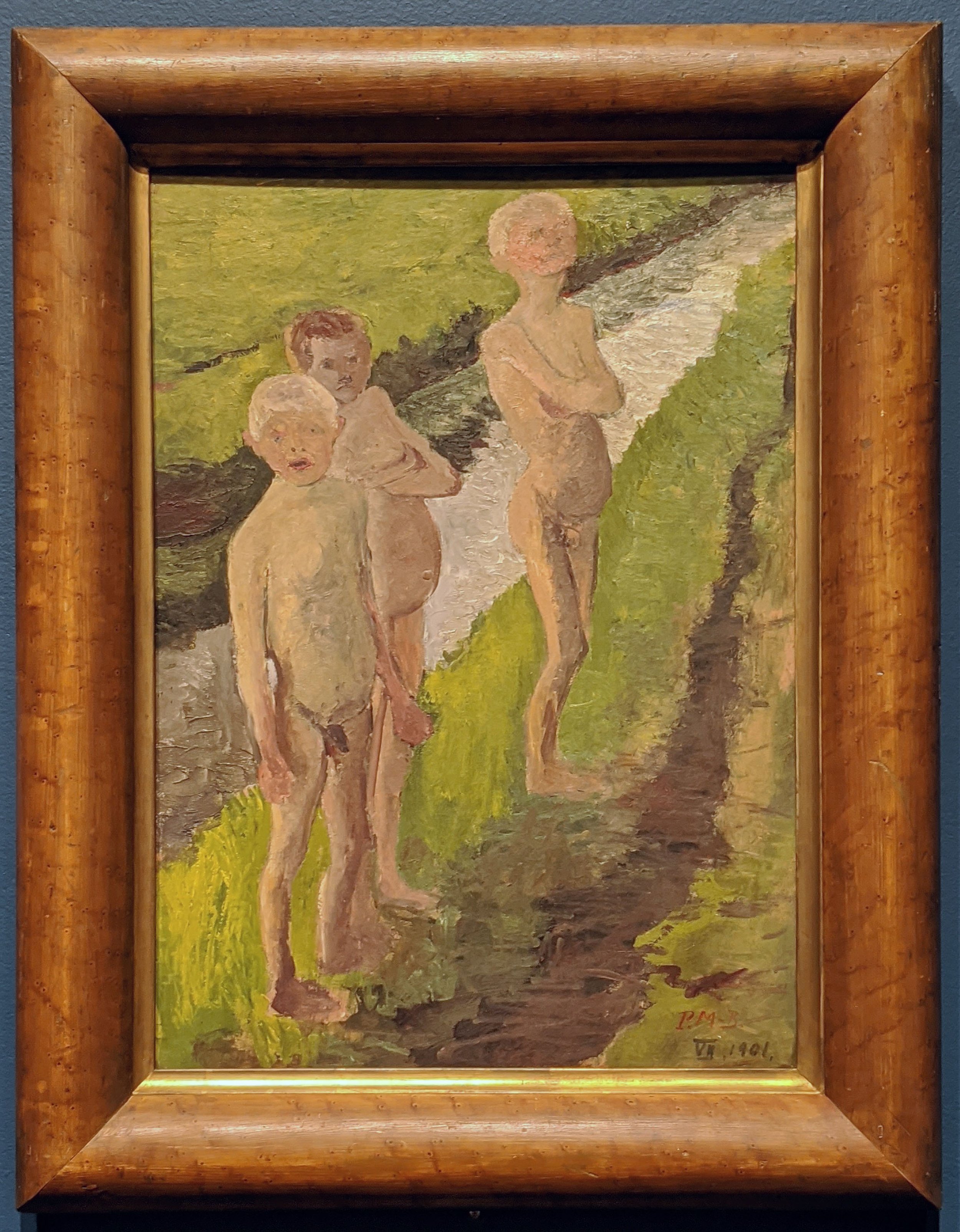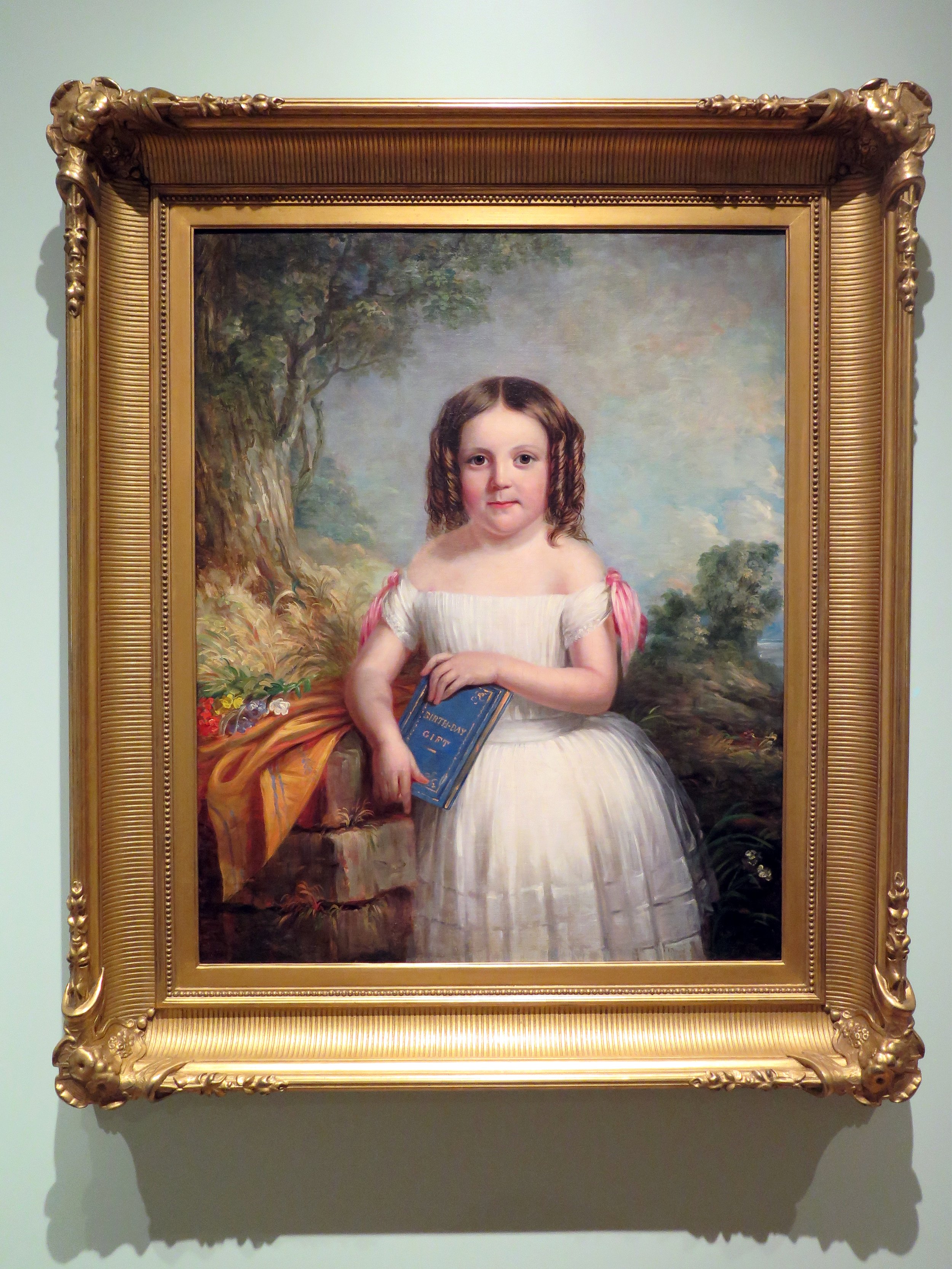MARQUET – MARSH – MATISSE - MAURER – MCENTEE – MILLER – MILLET – MODERSOHN-BECKER – MOUNT –MUNTER
Please check this page again as we continue to update with more artists framed by Gill & Lagodich in both period and replica frames.
Artists are listed alphabetically.

ALBERT MARQUET (1875 – 1947)
Portrait of Mademoiselle Duhamel, c. 1910-20s, oil on canvas, 32-1/8 x 25-7/8 in. Framed by Gill & Lagodich for the Chrysler Museum of Art. Period c. 1920s French Art Deco frame, reverse stepped profile, polychrome faux bois finish on wood, molding width 2-3/4 in.

REGINALD MARSH (1898 – 1954)
Pavonia, Jersey City, (Street Scene, Twelfth Avenue), 1928, oil on canvas, 20-1/8 x 30-1/4 in. Framed by Gill & Lagodich for the Nelson-Atkins Museum of Art, period gilded and polychrome oak frame, original distressed finish, cassetta profile; molding width: 3-1/4 in. “Reginald Marsh's Pavonia-Jersey City shows casual activity in an industrial district in New Jersey. An attractive woman strides along the sidewalk of Pavonia Avenue and catches the attention of two men. Her allure is suggested by not only their gawking, but also the locomotive's whistling smokestack. Her rich red dress and position at the corner of the composition, where the entire weight of its design accumulates, ensure that she is the painting's primary focus. Born in Paris, Marsh began his career in magazine illustration and worked among the initial staff of The New Yorker. A train enthusiast, the painter often crossed the Hudson River from his Manhattan studio to Jersey City, which had served as a transportation hub since the 19th century.” —NAMA gallery label. Painting Purchase: acquired through the generosity of the Union Pacific Foundation, Mrs. Herbert O. Peet, and the Nelson Gallery Foundation.


JEAN-FRANCOIS MILLET (1814–1875)
In the Auvergne, 1866/69, oil on canvas, 32-1/6 x 39-1/4 inches framed by Gill & Lagodich for the Art Institute of Chicago, in a period French Barbizon painting frame, gilded cast ornament on wood, molding width 7-3/4".

RICHARD EMILE MILLER (1875–1943)
Afternoon Tea, Giverny, 1910, oil on canvas, 39-1/2” x 32”. Custom-made replica frame, gilded cast ornament on wood; molding width 7-1/4” Replicated from an original period Stanford White frame in the Gill & Lagodich Collection for the Indianapolis Museum of Art.

PAULA MODERSOHN-BECKER (1876–1907)
Three Boys Bathing by a Canal, 1901, Wurmsche Tempera on cardboard, mounted on wood, 54.3 × 39.4 cm (21-3/8 × 15-1/2 in.). Framed by Gill & Lagodich for the Worcester Art Museum. Worcester Art Museum. Mid-19th century American molding frame, faux bois painted wood, bolection profile, gilded liner, molding width: 3-1/4 in. “Modersohn-Becker’s earliest work focuses on the rural landscape of northwestern Germany. Along with other artists and writers—among them her husband Otto Modersohn, poet Rainer Maria Rilke, and his wife Clara Rilke-Westhoff—she found inspiration in a pre-industrial peat-farming community in Worpswede. During several visits to Paris beginning in 1899, however, she encountered the work of Van Gogh, Cézanne, and Gauguin. This painting, created shortly after her return to Worpswede, demonstrates the influence of these artists, specifically the vivid palette, asymmetrical composition, and experimentation with new paints and surface texture. Most importantly, this painting shows her engagement with the nude and introduction of figures into her landscapes. Due to the scarcity of models in Worpswede, she looked to the local population—here, three malnourished boys. Her unique approach to painting—often called proto-Expressionist—was tragically cut short, when she died at age 31 shortly after giving birth.” —Worcester museum label Painting: Stoddard Acquisition Fund

WILLIAM SIDNEY MOUNT (1807–1868)
“Bar-Room Scene”, 1835, oil on canvas, 22” x 27” c. 1840s American painting frame; gilded applied ornament on wood; molding width 4-3/4” Period frame from Gill & Lagodich for the Art Institute of Chicago. “William Sidney Mount specialized in scenes of everyday life, known as genre paintings. He was one of the earliest American artists to do so, and his compositions, including Bar-room Scene, were rich in narrative and humor and engaged with the complex cultural, political, and racial circumstances that defined antebellum society. Here Mount portrayed a boisterous group of patrons in a country tavern. The seated men encourage the drunken dance of the central figure, whose tattered clothes and inebriated state suggest a less fortunate position. Standing in the back corner is an African American figure, who, as a free black man in 1830s New York, was able to frequent the public tavern, but, as Mount makes clear visually, did not participate fully or equally in this community.” — AIC permanent collection label

WILLIAM SIDNEY MOUNT (1807–1868)
Portrait of Mary Lavinia Brooks Owen, née Mary Lavinia Brooks, at the age of 5, 1849, oil on canvas, 34 x 27 inches. Framed by Gill & Lagodich for the Museum of the City of New York. Period c.1860 American painting frame, gilded applied composition ornament on wood, molding width 5-1/2 in. “Mary Lavinia Brooks (1844–1901) was the daughter of Edward Sands Brooks and Adeline Matilda Cremer Leveridge Brooks, who married William Henry Owen, an episcopal priest and noted coin collector. The young girl holds a copy of a Victorian gift book titled Birth-Day Gift or The Birth-Day Present expressly for the purpose of promoting gift-giving.” —MCNY exhibition label.

GABRIELE MUNTER (1877–1962)
Houses in Riegsee, 1909, oil on pressed board, 32.9 × 40.8 × 0.2 cm (12-15/16 × 16-1/16 × 1/16 in.) Framed by Gill & Lagodich for the Worcester Art Museum. Worcester Art Museum. Custom-made replica first-quarter 20th-century frame; Paul Klee inspired design, ebonized rough sawn wood, molding width 2-1/4 in. “This is a rural scene of houses (Häuser) in Riegsee, a small German village in the Alpine foothills. It was painted two years before Münter joined fellow German and Russian expatriate artists to form “Der Blaue Reiter” (The Blue Rider), a German Expressionist movement based in Munich that was marked by spiritual and symbolic uses of color. In the early 1900s, Münter studied at Russian artist Wassily Kandinsky’s avant-garde Phalanx School in Munich, where she was encouraged to experiment with her technique. During that time, her practice was also informed by the bold colors of Gauguin and the Fauves as well as Bavarian folk art and reverse-glass painting. Here, Münter’s daring is in full effect, with the cardboard support visible in between fields of jewel-toned color, whose application ranges from thin washes to thick, textural patterning.” —museum label, Painting: Stoddard Acquisition Fund.

